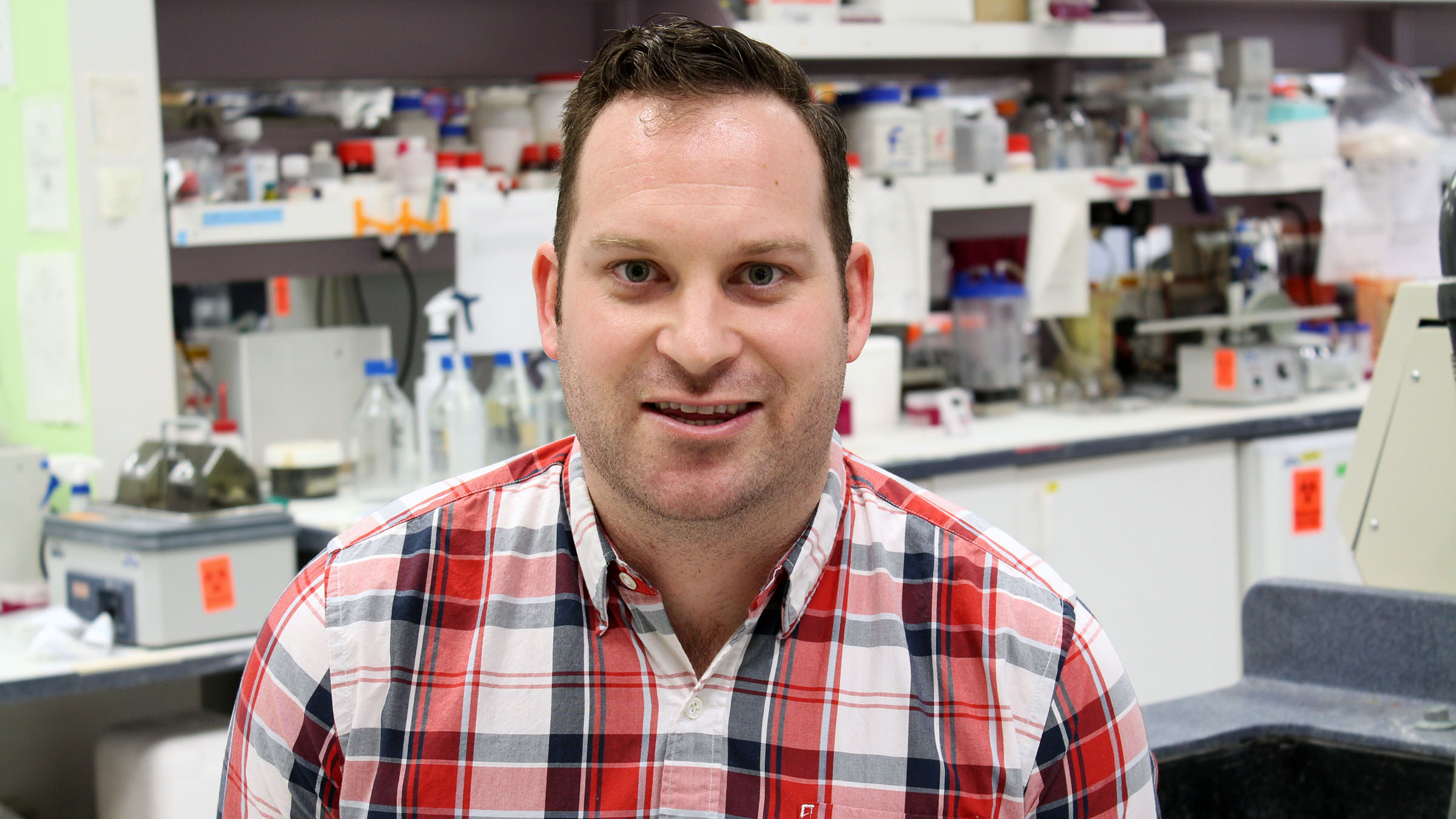 Marshall Hogarth, postdoctoral fellow at Children’s Research Institute, Children’s National Health System in Washington, D.C., was awarded an MDA development grant totaling $180,000 over three years to improve understanding of the molecular and cellular basis of the fatty replacement of muscle in type 2B limb-girdle muscular dystrophy (LGMD) as well as in Miyoshi myopathy.
Marshall Hogarth, postdoctoral fellow at Children’s Research Institute, Children’s National Health System in Washington, D.C., was awarded an MDA development grant totaling $180,000 over three years to improve understanding of the molecular and cellular basis of the fatty replacement of muscle in type 2B limb-girdle muscular dystrophy (LGMD) as well as in Miyoshi myopathy.
If successful, Hogarth’s work could enable therapeutic development to slow or block disease progression by preventing muscle loss.
Please describe your current research in LGMD.
Limb-girdle muscular dystrophy type 2B (LGMD2B) is a progressive muscle-wasting disease caused by mutations in the gene coding for the dysferlin protein. Gradual replacement of muscle with fat is a feature of the pathology in both LGMD2B patients and mice with insufficient levels of dysferlin. Loss of muscle function in LGMD2B patients and mice is correlated with the fatty conversion of muscle, which suggests that the processes leading to fatty muscle conversion are significant to disease pathogenesis and are thus potential therapeutic targets. However, little is known about the mechanism of the fatty conversion and how the absence of dysferlin protein disposes muscle into this pathway.
Using a mouse model of dysferlin-deficiency we have mimicked age and injury-induced fatty conversion and degeneration of muscle observed in LGMD2B patients. Further, we have developed a new mouse model where fatty conversion and muscle dysfunction associated with dysferlin deficiency has been attenuated. Using these tools, we will decipher the cellular mechanism underlying the fatty replacement of LGMD2B muscle and identify approaches to prevent this process to improve loss of muscle function in LGMD2B.
Is this your first MDA grant?
This is my first MDA grant, and it is difficult to overstate how much it means to me. A career in academic research has long been a dream and something I have worked hard towards, but the transition from postdoctoral research to an independent investigator is tremendously difficult for all young scientists. Hence, I’m extremely grateful to MDA for their support in providing an opportunity for me to chase my dreams.
What is your focus within the LGMD field and why is it important?
I’m interested in understanding the basis for the age-dependent muscle loss, specifically with regards to the relevance of this process to LGMD2B where appearance of intramuscular fat and replacement of myofibers correlates with the onset and progression of disease in patients.
Fatty replacement of muscle has been observed due to ageing and injury, but this is greatly enhanced in dysferlinopathic muscle. However, there is little understanding of the molecular and cellular basis of this process and consequently it is unclear how one can intervene to prevent it. My work focuses on addressing this lack of understanding and could provide avenues to halt or slow this aspect of the pathology.
Why is it important that MDA continue to fund research in LGMD and Miyoshi myopathy?
There is still considerable unmet need in understanding dysferlinopathy and there are no treatment options available. Exciting progress is being made in this area, and continued funding by MDA is critical to ensure that this momentum is maintained and translated into clinical benefits.
What do you feel people impacted by these diseases can have the most hope about with respect to research right now?
The late onset of clinical symptoms is the most puzzling aspect associated with the dysferlinopathies. Understanding the pathological mechanisms which underpins this and discovering avenues to intervene in the process will be of great benefit to patients, clinicians and researchers.
Does your work have any potential implications for other disease fields?
Fatty replacement of muscle is associated with a number of different diseases, including other muscular dystrophies, denervation/disuse atrophy, sarcopenia and chronic obesity. The biological mechanism we are investigating stands to provide insight into how these processes are activated and may lead to muscle loss in these other disease conditions.
Learn more about MDA’s LGMD genetic testing program.
To learn more about how MDA research is accelerating treatments and cures for LGMD and Miyoshi myopathy, please visit mda.org.
